Faculty Members Reflect on President’s Fund for Racial Justice Courses
During the 2020-21 academic year, President Valerie Smith selected eight courses to support as part of the President’s Fund for Racial Justice, the first component of an effort to more fully understand the life experiences of Black and Brown people and other marginalized groups in the U.S. through engaged scholarship.
Faculty members designed and taught courses focused on transformative justice, with race and racism and their relationship to power and privilege as central queries for interrogation and study. After a full year of the initiative, faculty members from six of the courses reflected on their key takeaways, chief among them the insights sparked and actions taken by students and the deep contributions of alumni and guest speakers.
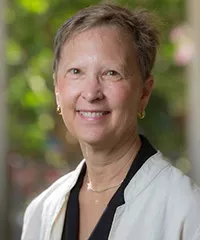
Diane Anderson, associate professor and chair of educational studies, on Literacies Pedagogy: Read, Make, and Mend the World
This course was an opportunity for me to more explicitly live into the values that have been the basis of my teaching from the beginning — to assume all students have knowledge and goals worth evoking; to work against the race, class, gender, and other binaried barriers to knowing one another and committing to everyone’s success; to have all of us, including me, enter into a learning space to be uncomfortable and examine our biases and misconceptions, to unlearn and rethink. Initially, it pushed me to de-center the whiteness of literacy work for children and the courses I teach at Swarthmore.
We did this through Black, Indigenous, and people of color (BIPOC) picture books about makers. The course and the collaborative work that it entailed became a sanctuary for many of us during this dark pandemic and violent winter into this more tentatively hopeful spring. The work has inspired us to write an article together about the anti-racist curricula we have made and what we learned, including new questions.
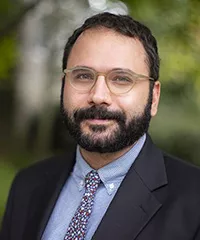
Osman Balkan, visiting assistant professor of political science, on Borders and Migration
The highlights were the numerous conversations that we had with scholars, activists, advocates, and policy practitioners in the fields of migration studies and immigrant rights. One of these conversations featured Diana Martinez-Montes ’20 and Yasmeen Namazie ’19, both of whom had taken my Borders and Migration course here. They now work as client advocates for New York City’s Center for Appellate Litigation and spoke to our class about their participation in the Immigration Justice Project. Our class also collectively conducted oral history interviews with immigrants residing in the U.S., and worked toward building a website that will highlight these immigrant voices in an effort to explore the complexities and contradictions of what it means to be an American in the 21st century.
Members of the class also created a website to showcase the diversity of lived experiences of immigrants in the U.S. and reflect on what it means to be an American in the 21st century.
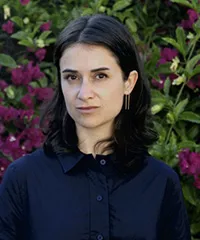
Paloma Checa-Gismero, assistant professor of art history, and Brian Goldstein, assistant professor of art history, on Building New Worlds: The Arts and Architectures of Liberation
Checa-Gismero: Teaching this course invited us to reconsider the importance of cultural work, including art and architecture, in the pursuit of emancipation. We asked our students to think about the role of culture in emancipation in the past, present, and future tense. They wrote calls to action, mapped the scenarios of liberation, and imagined themselves as actors involved in emancipatory action. Thanks to the support of the President’s Fund, we were able to bring to our classroom a variety of fantastic guests who shared with us their experiences, making room in the classroom for the many positionalities involved in putting art and architecture in the service of building better worlds.

Goldstein: For me, the highlight has been the chance to introduce students to creative people — architects, historians, artists, curators, administrators, and urban planners — who have worked toward racial justice. If there is a silver lining of learning during the pandemic, it’s the ease and immediacy of such visits. We’ve spent time with Spelman College President Mary Schmidt Campbell ’69, H’09, artist Mary Baxter (aka Isis Tha Saviour), and urbanist Justin Garrett Moore, among others, all of whom generously shared their experiences and offered models to students who likewise hope to make a better world. What I hope students take away from those experiences is the idea that architecture and art can be powerful tools for social change, and that there are many avenues by which one can pursue that change.
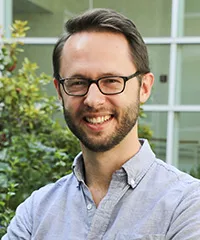
Michael Dougherty, visiting assistant professor of mathematics, on Mathematics and Social Justice
People often get the impression that mathematics is an entirely abstract subject, or that it exists outside of any moral or ethical framework, but this is far from the truth. My hope was for students to explore mathematics as a human discipline and to learn about the societal impacts of modern mathematical tools, especially regarding racial justice in the U.S. These are challenging topics to discuss, but I was lucky to have a wonderful group of interested students from a variety of academic backgrounds. I was especially pleased to see my students excited and ready to discuss with our guest speakers, statistician Kristian Lum of the University of Pennsylvania and mathematician Federico Ardila of San Francisco State University and Universidad de los Andes. I am grateful to them for their insightful questions and lively conversations.
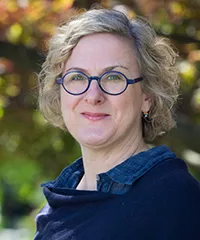
Barbara Milewski, associate professor of music, on Music in Times of War and Disease, co-taught with James Blasina, assistant professor of music
Our J-Term course considered the current pandemic’s impact on music in a global-historical context of war and pestilence, seeking to understand how these phenomena have affected musical sounds, and how musicmaking has contributed to human resilience. We also investigated the ways in which medical, sociopolitical, and artistic responses to war and disease have frequently been racialized across history. This allowed us to observe how the past informs our present crisis, and how race as a sociohistorical concept has itself been impacted by the concomitant disruptions of war and disease.
The funding also allowed us to invite a range of prominent professors to meet virtually with our class, among them: Evelynn Hammonds (Harvard University, Department of the History of Science), Remi Chiu (Loyola University, Department of Fine Arts), Laurie Caslake (Lafayette College, Department of Biology), and Matthew J. Jones (American Music Research Center, University of Colorado at Boulder). We were also joined by our own illustrious alumnus and Board of Managers member Bennett Lorber ’64, H’96 (professor emeritus, Lewis Katz School of Medicine, Temple University). These guests really enriched our interdisciplinary understanding of music and disease and introduced our students to leading experts in their respective areas of study.
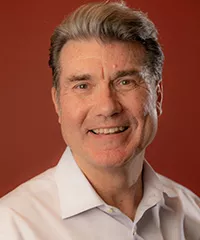
Mark Wallace, professor of religion, on First-Year Seminar: Apocalypse: Hope and Despair in the Last Days
The highlight of my Apocalypse course was that I co-taught it with Pamela Boyce Simms, a social justice advocate and founder of the Community Supported Enlightenment Network. It deployed a variety of critical methods — critical race theory, Indigenous studies, queer criticism, and ecospirituality — to bring to light flickers of grace and healing limned in the shadows of the genocides, pandemics, and ecocatastrophes of our time. Special features of this course included student-led teaching and meditation practices in nature-based well-being. The aim was to equip first-year students with the tools to navigate — with grit and purpose — the many plagues and apocalypses of our troubled times.



